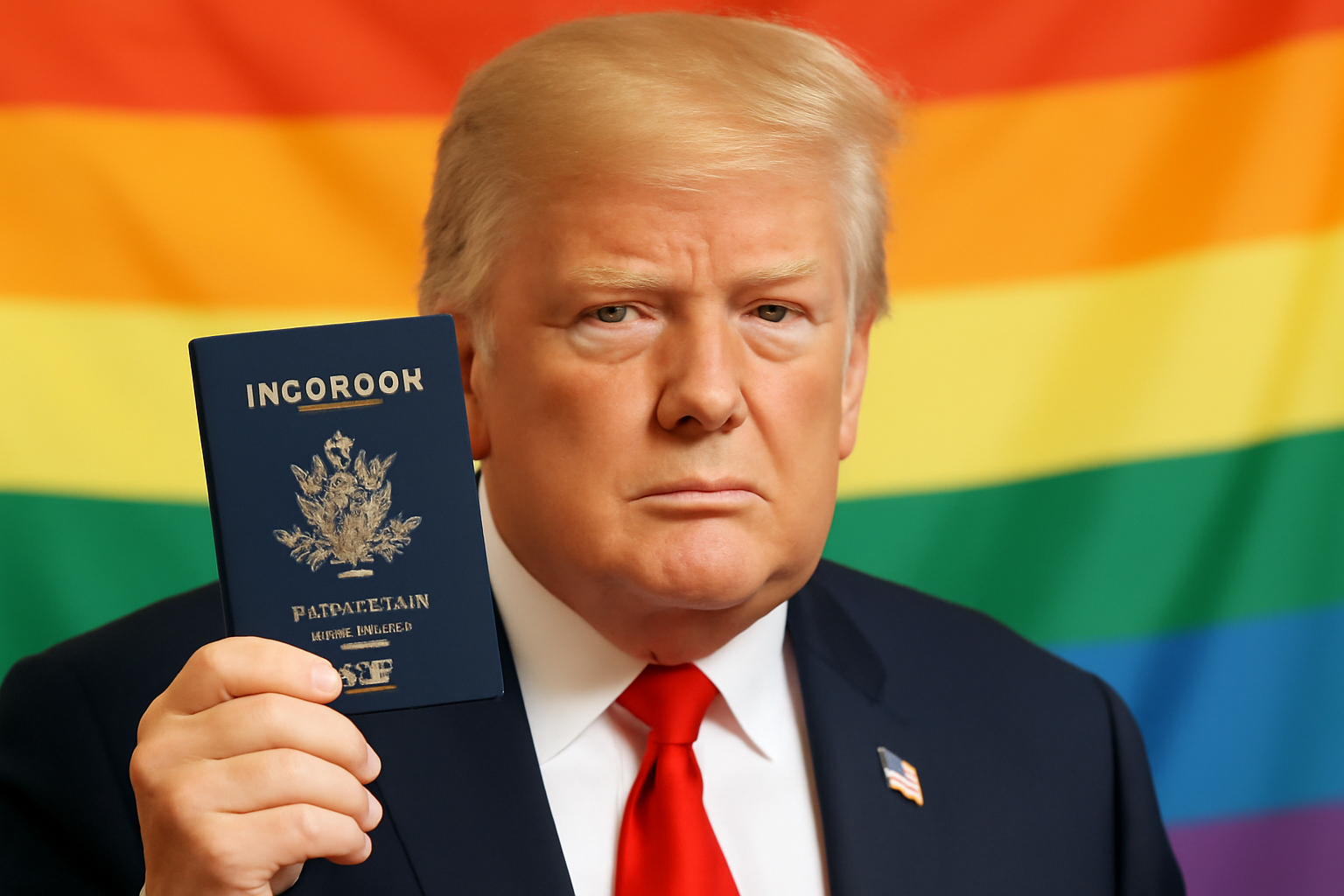
President Donald Trump, shortly after his inauguration, issued several executive orders that have significant implications for the recognition of gender diversity in the United States. Among these directives is a mandate that the federal government recognize only two genders: male and female. This decision threatens to roll back the advancement made in recent years regarding the inclusion of non-binary and transgender identities in official documentation.
The executive order explicitly targets the removal of the "X" gender marker option from US passports and other government-issued IDs. This decision marks a stark contrast from the policies implemented during the administration of former President Joe Biden, which allowed individuals who identify outside the traditional male or female binary to select "X" as their gender marker on passports.
The changes have already begun to take effect. According to reports, a page that previously detailed how US citizens could update gender markers on passports has been removed from the US State Department's website. As of January 21st, visitors to the site are redirected to a general information page on US passports, indicating a significant shift in policy.
Impact on Non-Binary and Transgender Individuals
This executive action has drawn criticism from advocacy groups and individuals who see it as a regressive step that undermines the dignity and safety of non-binary and transgender people. A spokesperson from the State Department confirmed that adjustments will be made to ensure government-issued IDs reflect what is described as the holder’s "biological sex." The directive compels the Secretaries of State and Homeland Security, along with the Director of the Office of Personnel Management, to carry out these changes across all relevant identification documents, including passports, visas, and Global Entry cards.
The Williams Institute at UCLA’s School of Law has provided data indicating that each year, approximately 16,700 non-binary individuals opt to use an "X" gender marker on their passports. This figure represents about 1.4 percent of the estimated 1.2 million non-binary adults in the United States. The inclusion of the "X" marker has been lauded as a progressive measure that allows these individuals to have their identities authentically represented in official documentation.
However, despite the positive reception of the "X" marker, not all non-binary and trans individuals have felt comfortable using it. Concerns about potential discrimination and logistical complications during travel have deterred some from selecting the "X" option. For instance, travel-related complications could arise when booking flights, as some airlines might not accommodate non-binary gender markers in their systems.
Broader Implications and Community Response
The executive order has prompted widespread concern and opposition among LGBTQ+ advocacy organizations, who argue that it perpetuates harmful binary understandings of gender and disregards the lived realities of many Americans. Critics point out that reinforcing a rigid binary gender system could have adverse effects on non-binary and transgender individuals, who already face substantial challenges related to identity recognition and discrimination.
In response to the order, several advocacy groups have called for increased support and legal protections for non-binary and transgender individuals. They emphasize the importance of inclusive policies that acknowledge and respect diverse gender identities, arguing that such recognition is crucial for promoting equality and preventing discrimination.
As the situation unfolds, it remains to be seen how these changes will be implemented in practice and what the long-term effects will be on those affected. The debate around gender markers in official documentation continues to be a focal point in broader discussions about gender identity and rights in the United States.
For now, the removal of the "X" gender marker on US passports represents a significant policy shift that has sparked dialogue and action among communities and advocates fighting for the rights and recognition of all gender identities.
Related Posts
Pride Month in Latin America: Protests and Demands for Equality
**Celebrating Pride and advocating LGBTQ+ rights in Latin America** Pride Month in Latin America was a lively mix where celebration met activism. Communities united, not just throwing a party but making a stand—demanding equality and pushing governments toward better protection and rights recognition. Throughout Latin America, pride events erupted in marches and cultural displays, each with a c [...]
Transgender Erasure Actions Implemented by National Park Service
```html Trump administration's impact on national park service and transgender recognition The Trump administration made notable moves in undermining transgender representation, which included directing agencies like National Park Service not include "T" and "Q" when they refered “LGBTQ” in any official communication. This move seems part a broader plan by this administration aimed at reducin [...]
Drag Night Extravaganza: Daddies & Baddies at Atlantic City's Anchor Rock Club
Atlantic City, NJ, isn't just about its casinos and boardwalk—it's a hub bursting with energy and entertainment. One event that truly captures this spirit? The "Daddies & Baddies" drag night at Anchor Rock Club. This vibrant night celebrates amateur drag in all its glory, offering a kaleidoscope display where creativity and community unite. If you're looking where inclusivity and creativity take [...]